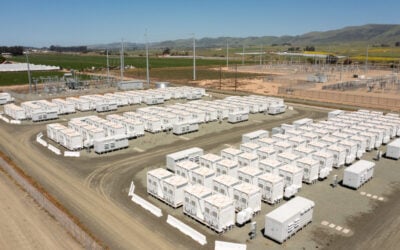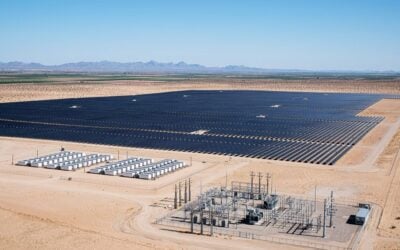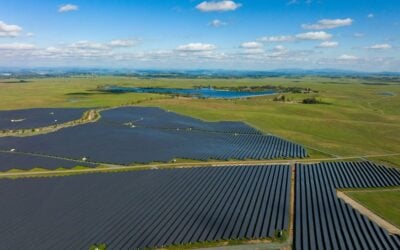The leaking Aliso Canyon well pad that was polluting Porter Ranch community in Los Angeles County. Flickr: Earthworks
The California Public Utilities Commission (CPUC) has issued a landmark resolution that requires a major utility to procure energy storage capacity as quickly as possible.
There has been a moratorium on gas injections at the Aliso Canyon Natural Gas Storage Facility ever since Southern California Gas Company members of staff discovered a now infamous methane gas leak in October last year.
Enjoy 12 months of exclusive analysis
- Regular insight and analysis of the industry’s biggest developments
- In-depth interviews with the industry’s leading figures
- Annual digital subscription to the PV Tech Power journal
- Discounts on Solar Media’s portfolio of events, in-person and virtual
Due to limited operations at Aliso Canyon following what was one of the largest gas leaks in US history, there are now fears of an outage risk in California during the up-coming summer and winter of 2016 and 2017. The facility, located in the Santa Susana Mountains near Los Angeles, had been supplying peaking power plants in that region. In April this year, regulators had already called for alternative measures to aid in offsetting the lost gas supplies, with solar PV and solar thermal forming part of those plans.
However, CPUC has now issued Resolution E-4791, which is an expedited direction to the utility Southern California Edison (SCE) to procure energy storage projects on an emergency basis. However, for projects to be eligible, they must be operational by the groundbreaking deadline of 31 December this year, giving developers just seven months.
Ravi Manghani, director, energy storage at GTM Research, told Energy-Storage.News: “This is definitely one of the fastest issued resolutions, but then desperate times call for desperate measures.
“The Aliso Canyon leakage was kind of a perfect storm, in a state that has experience with storage procurement and a progressive storage mandate in place.”
Gabe Schwartz, director of marketing at California-based storage firm Stem Inc, added: “So now the electric grid has a capacity problem and the utilities in Southern California have made their customers aware that they’re expecting potential service disruptions.”
Rather than a protracted five to 10 year operation at integrating storage into the grid, Schwartz said this makes energy storage an immediate issue with developers looking at three to six month timelines to mitigate the energy shortfall.
He added: “Energy storage, including other forms [of storage besides] electrical such as thermal storage, are really the only fast, viable solution to that problem.”
SCE actions
In response, SCE immediately released an RFO/RFP on the day following the Resolution, having been directed to hold a competitive solicitation for the storage contracts. These involve plans to buy at least 16.3MW of fully-deliverable transmission or distribution connected capacity, but the procured energy storage resources must not be less than 0.5MW in capacity.
SCE will host an online Bidder’s Conference to discuss the RFO and RFP processes on 2 June (Thursday).
Manghani said: “The exact amount of procurement will only be known once SCE receives all applications and has gone through the rigorous operational and economic analysis, but I won't be surprised if the actual procurement is greater than 16.3MW.”
CPUC noted that the new storage contracts are expected to cause a hike in ratepayer costs, but the actual costs are unknown at present.
However, the new storage capacity will count towards SCE’s overall storage mandate and local capacity requirements.
In November 2014, SCE announced that it will procure 261MW of grid-connected storage capacity from a handful of suppliers, after a competitive solicitation process, due in part to the need to replace a retired nuclear power station, San Onofre Nuclear Generating Station, as well as a number of natural gas plants. Within this it had set an objective to procure a minimum of 50MW of storage capacity, but instead opted for a much higher 261MW.






